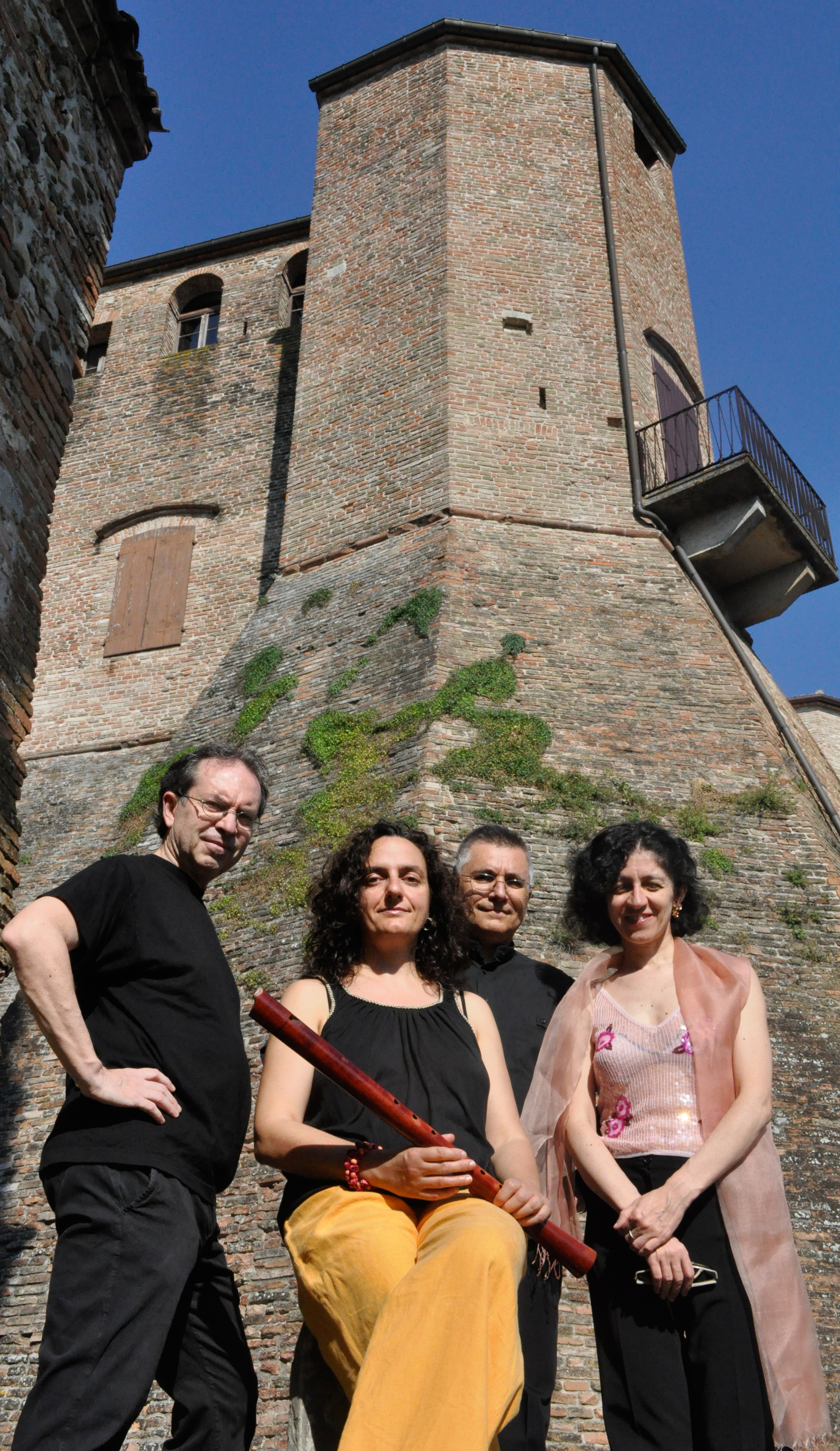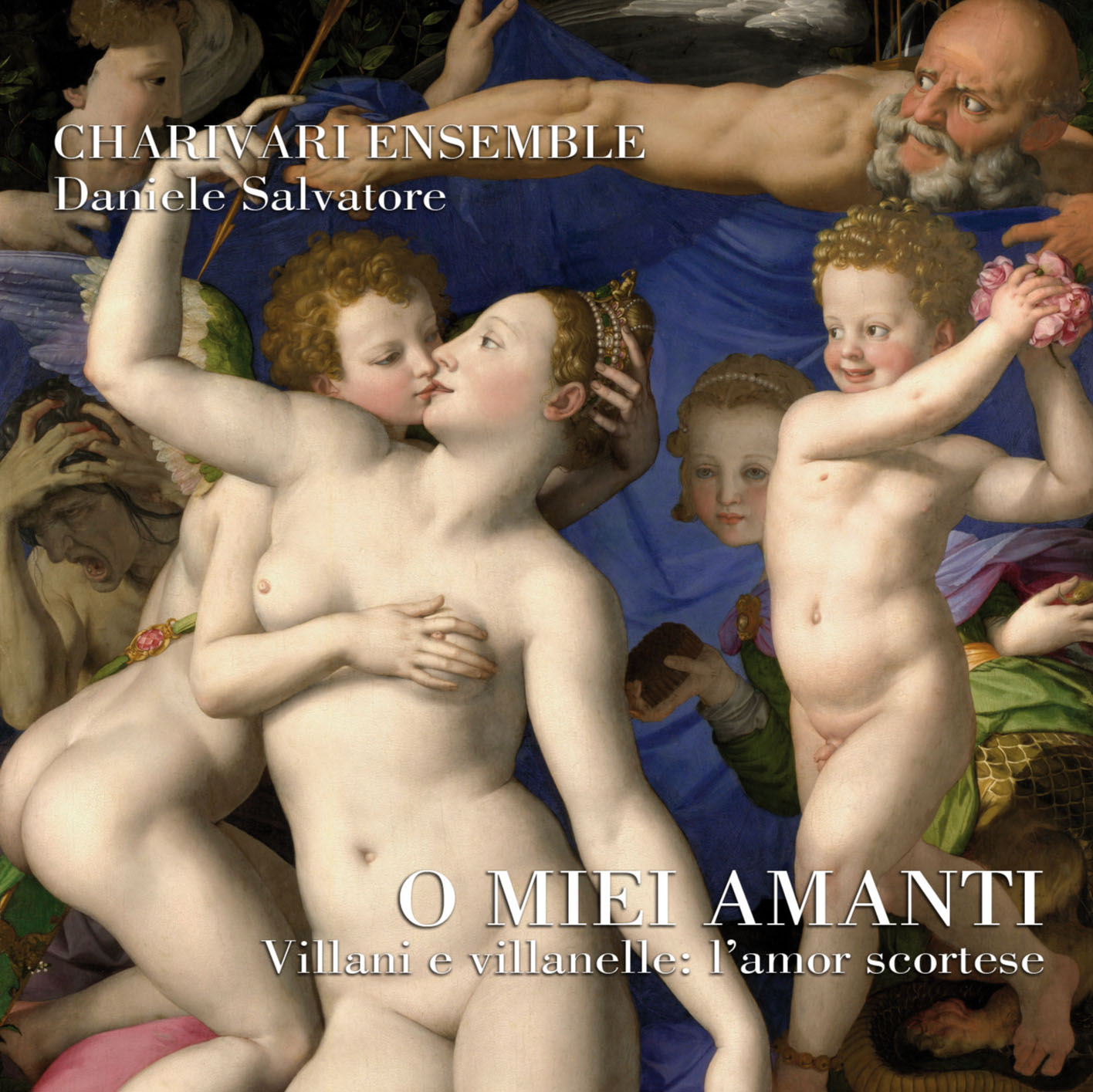
Charivari Ensemble, composed of a small group of musicians, is specialised in performing medieval, renaissance and baroque music. Several other musicians, also dedicated to ancient music, frequently join the group enabling them to perform a variety of programs with formations that range from trio to chamber orchestra.
The group, in its various formations, has won prizes in several international competitions and has performed for important associations (Unione Musicale - Torino, Associazione Musicale - Pesaro, Vittorio Cocito - Novara, Giuseppe Tartini - Roma, Amici della Musica – Ragusa, Ass. Liviabella – Macerata, Ass. Cult. L’Orfeo – Spoleto), festivals (Bologna Festival, Restate – Reggio Emilia, Alia Musica – Parma, Festival Cusiano - Lago d’Orta, Echi lontani – Cagliari, Sagra Malatestiana - Rimini, Musica Cortese - Friuli) and historical places of great interest (Castello Sforzesco - Milano, Oratorio Caravita - Roma, Abbazia di Serramonacesca, Museo Medievale - Bologna, Villa Litta – Milano, Villa Spinosa – Negrar/Verona, etc).
The group has performed abroad, playing in Egypt (Cairo and Alessandria), Belgium (Bruxelles-Genval) and in Ireland (Dublin and Carlow), recording for Egyptian radio and RTE (Irish radiotelevision).
Under the name ‘Aulòs Consort’, the group recorded its first compact-disc with '‘Tactus’ of Bologna (Italy), performing, for the first time, the complete Partitura del primo libro de canzoni francese a 4 & alcune Suonate by Nicolò Corradini. Contemporaneously, the first modern printing of this work was published by ‘Ut Orpheus’ of Bologna under the direction of Daniele Salvatore and Giovanni Torlontano. A second compact-disc featuring, Gnich Gnach e altri balli strumentali italiani, an instrumental dance collection by anonymous, was recorded, for the first time, by ‘Videoradio’ of Milano (Italy). The original music of this compact-disc was found in a XVII century manuscript preserved in the Civico Museo Bibliografico Musicale of Bologna.
Charivari Ensemble plays with original instruments or copies of ancient instruments and when performing medieval or renaissance music, the group dresses medieval and renaissance costumes.
Charivari Ensemble proposes shows for a long time, with actors and dancers: readings from Canterbury Tales by Geoffrey Chaucer; with Duilio Del Prete, Rappresentazione di Santa Uliva1 and Favola di Orfeo2 by Poliziano; with the ‘Istituto di Ricerca Teatrale’3 of Bologna, Folías – Elogio della Follia4 from Erasmo da Rotterdam, with actress Sara Galli. At the present time Charivari Ensemble proposes Il riposo dell‘amore5 from texts and lyrical poetries of ancient Occitan literature, with Sara Galli.
 The show Celesti giri e musicali accenti6. had two dancers as protagonists: Silvia and Laura Pezzenati. They studied with Bruna Gondoni of the company Il Ballarino from Florence. They, beyond to renaissance dance, attend courses of popular dance, theatrical laboratories, and courses of baroque dance with Deda Cristina Colonna, probably the most important baroque interpreter in Italy. The actual current collaboration was born for a show presented at ‘Bologna Festival 2001’.
The show Celesti giri e musicali accenti6. had two dancers as protagonists: Silvia and Laura Pezzenati. They studied with Bruna Gondoni of the company Il Ballarino from Florence. They, beyond to renaissance dance, attend courses of popular dance, theatrical laboratories, and courses of baroque dance with Deda Cristina Colonna, probably the most important baroque interpreter in Italy. The actual current collaboration was born for a show presented at ‘Bologna Festival 2001’.
The last work is O miei amanti - villani e villanelle: l’amor scortese7, a program based on villanelle, villotte and canzoni alla napolitana from original editions of sixteenth century kept at the Bibliotheca of Bologna's Conservatory.
1) Representation of Saint Uliva.
2) Orfeo’s Tale.
3) Institute of Theatrical Search
4) Praise of the Folly.
5) The rest of love.
6) Celestial Dances and Musical Accents.
7) Oh, my lovers.
Concert proposals
Il riposo dell'amore. Concert-show on troubadour and trouvère art with the actress Sara Galli.
O i miei amanti. Villani e villanelle: l’amor scortese. The program focuses on compositions of the sixteenth century, most of which are found into collections of villanelle, villotte and Neapolitan style songs preserved at the library of the Conservatory of Bologna.
Celesti giri e musicali accenti. Musica e danza tra Basso Medioevo e Tardo Rinascimento. A program of music and dance from manuscripts and impressed collections between Low middle Ages and Renaissance.



